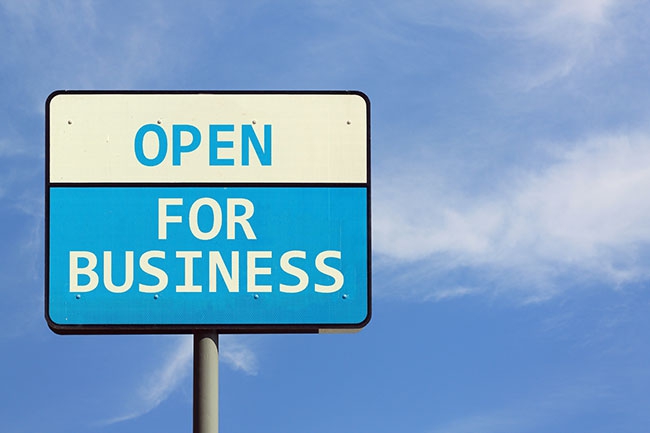
The Significance of Signage
February 1, 2017
By Dale Willerton and Jeff Grandfield
Remember to negotiate where, when and what type of signage you are allowed to advertise your bakery
 Photo: Shutterstock
Photo: ShutterstockIt’s much easier for customers to find your bakery if you have a prominent sign with your business name on it out front of your shop. The bigger the sign, the better – and the more attractive the sign, the better.
Never assume, however, that your landlord will share your vision of a large sign identifying your shop on or in front of his property. Bakeries can easily overlook the fact that their landlords may want to restrict all tenant signage on the property. Tenant requests for more, or larger, signage are often rejected
by landlords.
Landlords impose signage criteria and restrictions mainly because whatever they allow one tenant to do, the other tenants may want to replicate, and most landlords prefer an uncluttered property without extra signage simply because it looks more attractive. If your landlord does allow you to place a sign on the property, creating and maintaining it is your responsibility. This extra work on your part, however, can be very beneficial for many reasons:
Signage makes your bakery easier to find, and if you’re located in an area with a sea of shopping plazas or office buildings, a sign makes it much easier for visitors to pick you out of the crowd.
Signage drives traffic; people who don’t know you’re there might be drawn in by your sign as they walk or drive by.
Signage becomes recognized by local residents who will see it on their daily commute, and these residents are eventually more likely to visit your place of business because they are familiar with your name.
With that being said, note that your landlord may allow certain types of signage but not others. Typically, a landlord usually requires graphic drawings of your sign for written approval, or a landlord may provide you with a signage criteria package that you must follow as part of your lease agreement. Read this information carefully and understand that your landlord may consent to one type of signage but not another. To give you a better idea of what may or may not be allowed, here are the most common types of signage:
Building signage
This is the signage that almost every commercial location will have and it will generally appear directly above your main entrance. However, do not overlook the possibilities of having signage on multiple sides or even the rear of the commercial property if that will provide you additional exposure to walk-by or drive-by traffic.
Monument signage
A monument sign resembles a tombstone coming out of the ground and, typically, advertises just one or a few select tenants. Monument signs are not that common, but they can make your bakery look more substantial if you can get one.
Pylon signage
The tall sign by the roadway that tells passers-by what tenants are in the plaza is called a pylon sign. A property may have several pylon signs, which all display the name of the plaza at the top. Don’t assume that you will automatically get a panel on the pylon sign. There are often more tenants in a property than sign panels available, so make this part of your offer to lease or in your lease renewal. Ideally, try to pick your actual panel (both front and back), because a panel higher up on the pylon is usually more visible and read first.
Sandwich boards
Bakery tenants may wish to utilize these forms of signage to advertise limited time specials (e.g. Valentine’s Day treats, Easter buns); however, landlords may say no. If these are of interest to you, negotiate for them in advance. We will often negotiate predetermined times when the tenant can use these signs … landlords may be more comfortable in knowing these signs will not be out all year and thereby not create signage clutter.
Temporary pull-away
These are the signs on wheels covered with images or business messages. Most landlords hate these signs and the problems they create. Don’t assume that you may be able to bring in pull-away signage for your grand opening (or other special events). Landlords think these signs clutter or obstruct their property and may only allow limited numbers of pull-away signs to be used (and shared) by many tenants throughout the year. Again, negotiate pull-away signage rights up front, because the landlord doesn’t have to let you put these signs up if they are not included in the lease agreement.
Dale Willerton and Jeff Grandfield – The Lease Coach are commercial lease consultants who work exclusively for tenants. Dale and Jeff are also professional speakers and co-authors of Negotiating Commercial Leases & Renewals FOR DUMMIES (Wiley, 2013). Got a leasing question? Need help with your new lease or renewal? Call 1-800-738-9202, e-mail DaleWillerton@TheLeaseCoach.com or visit www.TheLeaseCoach.com.
For a copy of our free CD, Leasing Do’s & Don’ts for Commercial Tenants, e-mail your request to JeffGrandfield@TheLeaseCoach.com.
Print this page
Leave a Reply